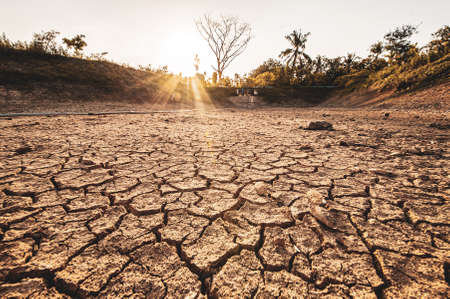Introduction: Understanding Natural Disasters in America
Natural disasters are a part of life for many American families, with floods and earthquakes ranking among the most impactful. These events can strike unexpectedly, disrupting daily routines, damaging property, and even threatening lives. In recent years, both floods and earthquakes have affected communities across the United States—from hurricanes bringing heavy rainfall to the Gulf Coast, to seismic activity shaking the West Coast. For families, the aftermath often means facing significant financial burdens and emotional stress. That’s why being prepared is more than just having an emergency kit; it also means understanding your insurance coverage and knowing what protection is available before disaster strikes. This article explores real-life case studies of American families who have experienced floods and earthquakes firsthand, highlighting how preparedness and the right insurance policies made a difference in their recovery journeys.
2. Real-Life Flood Experience: A Family’s Story in Houston
When Hurricane Harvey struck Houston in 2017, the Johnson family—like thousands of others—found themselves facing devastating floods that reached several feet inside their home. As a family of five with young children and elderly grandparents living together, they quickly learned how essential preparation and quick action can be during such a crisis. Their story offers valuable insight for American families about navigating both the immediate aftermath of a flood and the often complicated insurance claims process.
Immediate Response: Protecting Family and Valuables
The first priority for the Johnsons was safety. They moved everyone to the highest floor, gathered important documents (insurance policies, birth certificates), medications, and some non-perishable food items. Once it was clear that evacuation was necessary, they followed official guidance and used a neighbor’s boat to reach safety. This experience taught them the importance of having a family emergency plan and keeping an updated “go bag” ready at all times.
After the Flood: Assessing Damage and Contacting Insurance
Once floodwaters receded, the Johnsons returned to assess the damage: furniture ruined, appliances destroyed, drywall soaked. Because their standard homeowner’s insurance did not cover flood damage, they relied on a separate FEMA-backed National Flood Insurance Program (NFIP) policy they had purchased after moving into a high-risk area.
| Step | Action Taken by Johnson Family | Practical Advice |
|---|---|---|
| 1 | Documented all damages with photos and videos before cleanup | Take detailed visual records for your claim |
| 2 | Contacted their insurance company within 24 hours | Report losses immediately to avoid delays |
| 3 | Kept receipts for all temporary repairs and living expenses | Insurance may reimburse these costs |
| 4 | Met with an adjuster for on-site inspection | Be present to answer questions and clarify losses |
| 5 | Reviewed settlement offer carefully before accepting | Ask questions if anything is unclear or seems incomplete |
Navigating Insurance Challenges: Lessons Learned
The Johnsons found that while NFIP helped cover much of their structural and content losses, there were gaps—such as coverage limits on certain valuables and no reimbursement for temporary housing above a set amount. They also discovered that claims could take weeks or months to resolve fully. Through persistence and thorough documentation, however, they received enough support to rebuild their home and recover most of their losses.
This real-life case highlights why families in flood-prone areas should review their insurance annually, consider supplemental policies if needed, maintain up-to-date documentation of belongings, and keep open communication with insurers throughout the recovery process. The Johnsons’ experience is a practical example of resilience and preparation that other American households can learn from.
![]()
3. Earthquake Impacts: Lessons from California
A Family’s Firsthand Experience with a Major Quake
For many American families living in California, earthquakes are an ever-present risk. The Johnson family experienced this firsthand when a 6.5 magnitude quake struck their suburban neighborhood just outside Los Angeles. The immediate aftermath was chaotic—furniture toppled, dishes shattered, and cracks appeared in the walls of their single-family home. Thankfully, no one was seriously injured, but the damage to their property was significant.
The Emotional and Financial Toll
In the days following the earthquake, the Johnsons faced both emotional stress and logistical challenges. Their children were anxious about aftershocks, and the family had to temporarily relocate while inspectors assessed the safety of their home. The repairs included structural reinforcements and replacing damaged utilities, leading to mounting expenses that stretched their household budget.
Navigating the Insurance Process
Like many Californians, the Johnsons learned that standard homeowners insurance does not cover earthquake damage. Fortunately, they had purchased a separate earthquake insurance policy through the California Earthquake Authority (CEA). Filing a claim required detailed documentation, including photos of the damage and repair estimates. Although the claims process took several weeks, the coverage helped offset most repair costs and provided funds for temporary housing.
Key Takeaways for Families
The Johnson family’s experience highlights a few crucial lessons: earthquake insurance is essential for homeowners in high-risk areas; keeping updated records of your belongings can speed up claims; and having an emergency plan helps reduce stress during recovery. Their story underscores how preparation and proper coverage can make a world of difference when disaster strikes.
4. Common Insurance Challenges and Successes
When a natural disaster like a flood or earthquake hits, families often expect their insurance to provide a safety net. However, the reality can be complicated. Many American families have faced unexpected challenges with their insurance policies after such events. Below is an overview of the most common obstacles families encounter, as well as some encouraging stories of positive outcomes.
Typical Obstacles Families Face
| Challenge | Description | Example from Case Studies |
|---|---|---|
| Delayed Payouts | Insurance companies may take weeks or months to process claims, leaving families in temporary housing or financial distress. | The Johnson family in Houston waited over four months for their flood claim to be resolved after Hurricane Harvey. |
| Policy Confusion | Many homeowners mistakenly believe standard policies cover all disasters, but flood and earthquake coverage often require separate policies. | The Smiths in California discovered too late that their homeowner’s policy did not include earthquake damage. |
| Underinsurance | Families sometimes find their coverage limits are lower than the cost of rebuilding, leading to significant out-of-pocket expenses. | The Martinez family in Florida faced a $30,000 gap between their insurance payout and repair costs after major flooding. |
| Denial of Claims | Claims can be denied due to technicalities, paperwork errors, or disputes about the cause of damage. | An Oklahoma family had their earthquake claim denied because the insurer classified the event as “settling” rather than quake-related damage. |
Stories of Positive Outcomes
Despite these hurdles, there are many examples of families who navigated the insurance process successfully:
- The Carters in New Jersey: After Superstorm Sandy, they worked closely with a local agent and received full payment within six weeks due to clear documentation and prompt communication.
- The Nguyens in Seattle: Their preparedness paid off when their comprehensive earthquake policy covered nearly all structural repairs following a 6.8-magnitude quake.
- The Thompsons in Texas: Their proactive review of policy details before hurricane season ensured they had adequate flood coverage, which made their recovery much smoother after severe flooding in their neighborhood.
Practical Takeaways for Families
- Review Your Policies Annually: Make sure your coverage matches your current risk level and property value.
- Ask Questions: Don’t hesitate to clarify what is—and isn’t—covered with your insurance agent.
- Keep Documentation Organized: Having photos, receipts, and records ready speeds up the claims process if disaster strikes.
- Consider Working with Local Agents: Local experts often understand regional risks better and can help tailor your coverage effectively.
Together, learning from both challenges and successes helps families across America make informed decisions about disaster insurance and protect what matters most—their homes and loved ones.
5. Practical Tips for American Homeowners
Actionable Advice for Choosing the Right Insurance
After reviewing real-life case studies of families and homeowners dealing with floods and earthquakes across the U.S., one clear lesson emerges: having the right insurance makes all the difference. Start by understanding your home’s location risks—use FEMA maps or local hazard assessments to see if you’re in a flood zone or earthquake-prone area. Don’t assume standard homeowners insurance covers everything; most policies exclude flood and earthquake damage. Explore specialized options like the National Flood Insurance Program (NFIP) or private earthquake insurance, depending on your needs. Compare deductibles, coverage limits, and exclusions carefully before signing up.
Important Questions to Ask Your Insurance Agent
Before purchasing a policy, consider these key questions:
- Does my current policy cover flood or earthquake damage?
- What are the coverage limits and deductibles for each type of disaster?
- Are there waiting periods before coverage begins?
- What documentation do I need if I have to make a claim?
- Does my policy include additional living expenses if my home becomes uninhabitable?
Don’t hesitate to ask for clarification on any terms you don’t understand. A good agent will help you compare quotes and coverage options from several providers to ensure you’re getting the best protection for your family’s needs.
Steps to Take Before a Disaster Strikes
- Create an inventory of your belongings—photos, receipts, and serial numbers can speed up claims.
- Store important documents (insurance policies, IDs, medical records) in a waterproof and fireproof safe or digitally in the cloud.
- Review your insurance policy annually or whenever you make significant home improvements.
- Develop a family emergency plan, including evacuation routes and contact information.
Actions to Take After a Disaster
- Contact your insurer as soon as it is safe to do so—claims are often processed on a first-come basis.
- Take photos or videos of all damage before making temporary repairs.
- Keep records of all repair costs, hotel stays, and related expenses—these may be reimbursable under your policy.
- Work closely with adjusters and ask for written estimates and timelines.
The Bottom Line
Your neighbors’ stories prove that preparedness pays off. Taking proactive steps now can minimize stress and financial loss if disaster strikes. Remember: The right insurance policy is more than just paperwork—it’s peace of mind for your family’s future.
6. Building Resilience: Community and Support Networks
After examining real-life case studies of floods and earthquakes across America, one thing becomes clear: recovery and preparedness are not just individual efforts—they thrive on strong community ties. When disaster strikes, it’s often neighbors, local organizations, and grassroots networks that provide the first line of support. These connections can make all the difference in how quickly families bounce back and how well they prepare for future risks.
The Power of Neighborly Support
In many American neighborhoods affected by floods or earthquakes, residents recount how immediate help came from those living next door. Whether it was lending a generator during a power outage, sharing food and water supplies, or simply providing emotional comfort, neighbors played a vital role in the initial response. Case studies show that communities with active neighborhood watch groups or social media communication channels coordinated faster evacuations and more efficient resource sharing, reducing stress and confusion during emergencies.
Local Organizations: Bridging Gaps
Beyond neighborly help, local nonprofits, churches, schools, and volunteer groups have a long tradition of stepping in where official resources may fall short. After significant events like Hurricane Harvey or the Northridge earthquake, these organizations organized temporary shelters, distributed relief supplies, and helped families navigate insurance claims. Their deep roots in the community allow them to understand unique local needs—like ensuring translation services for non-English speakers or arranging transportation for seniors—and to advocate for fair insurance settlements when issues arise.
Community Resources for Preparedness
Preparedness isn’t only about what happens after disaster hits—it’s also about building resilience ahead of time. Across the U.S., community-led programs host emergency drills, distribute preparedness kits, and offer workshops on understanding flood and earthquake insurance coverage. Some towns have developed mutual aid agreements or “buddy systems” where families pair up to check on each other during crises. These proactive measures empower residents with knowledge and confidence to protect their homes and loved ones.
The lessons from real-world case studies highlight a simple truth: while having solid insurance is essential, being part of a connected and proactive community often determines the speed and success of recovery. By investing in relationships with neighbors and participating in local initiatives, families can build a safety net that goes beyond financial protection—offering hope, solidarity, and practical help when it matters most.


